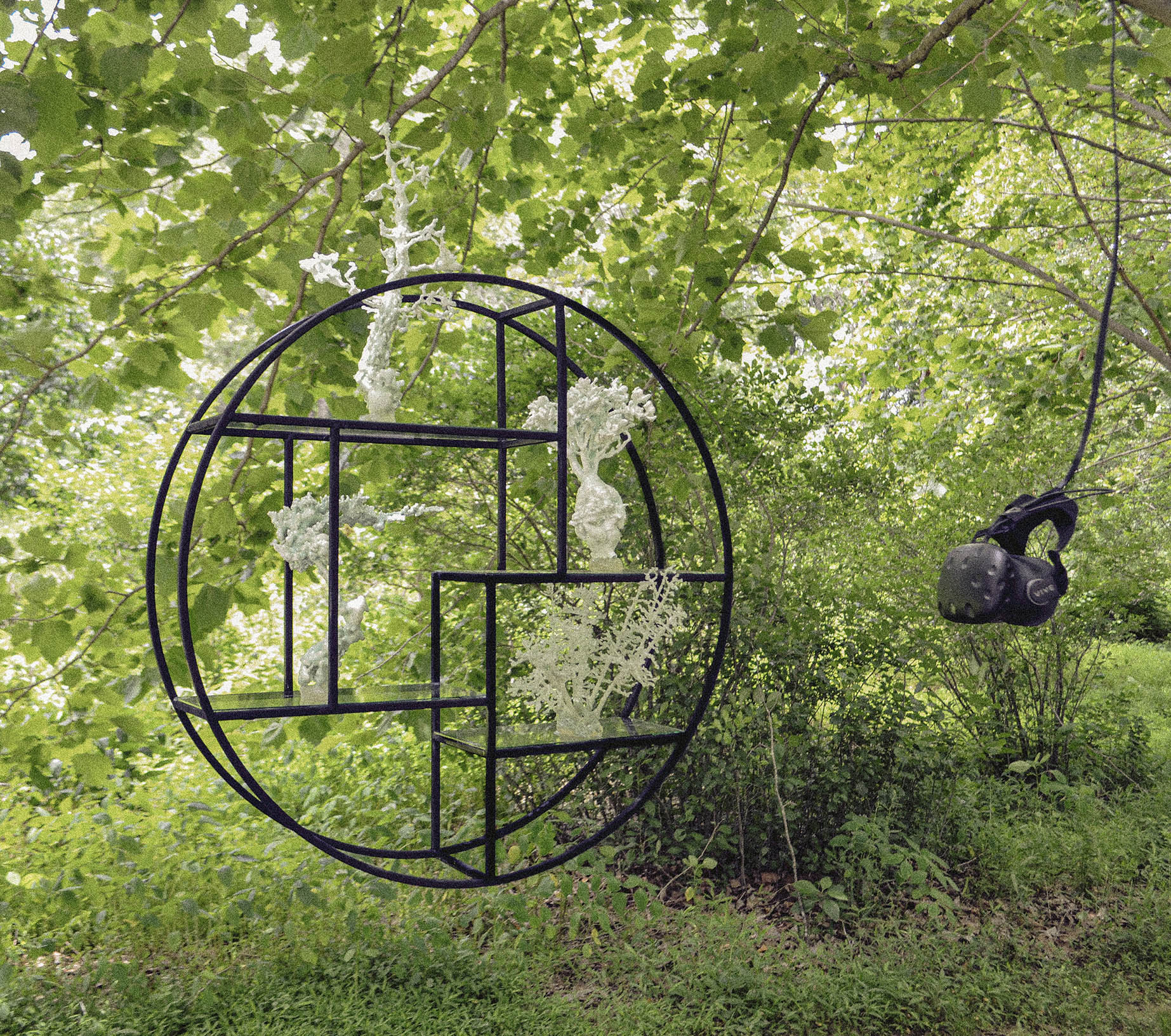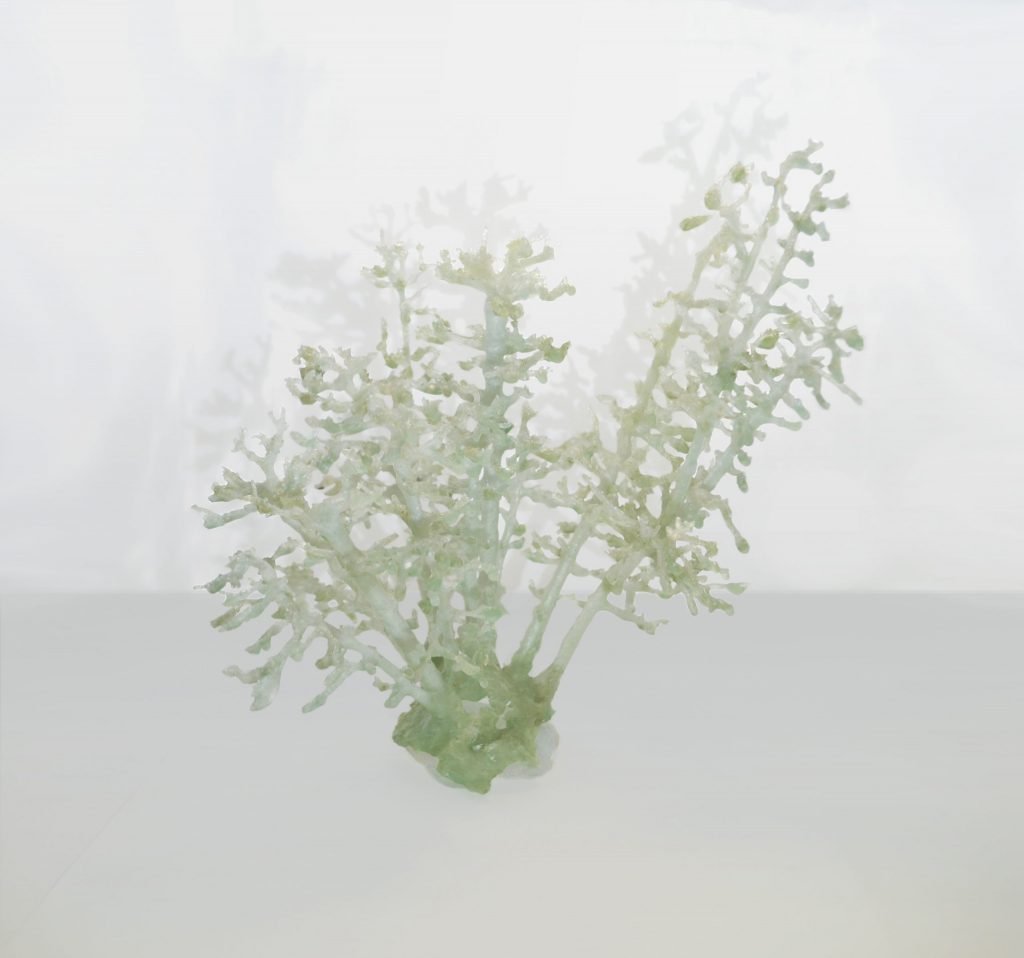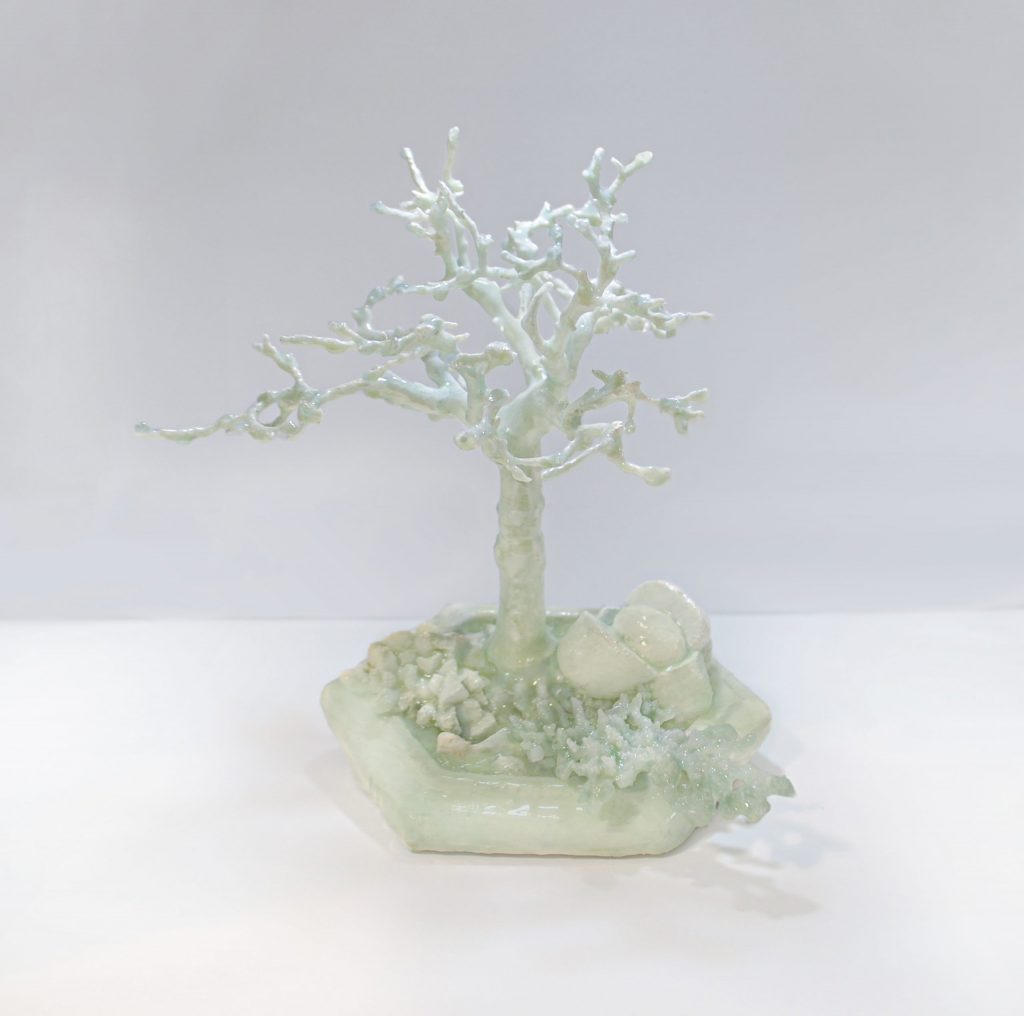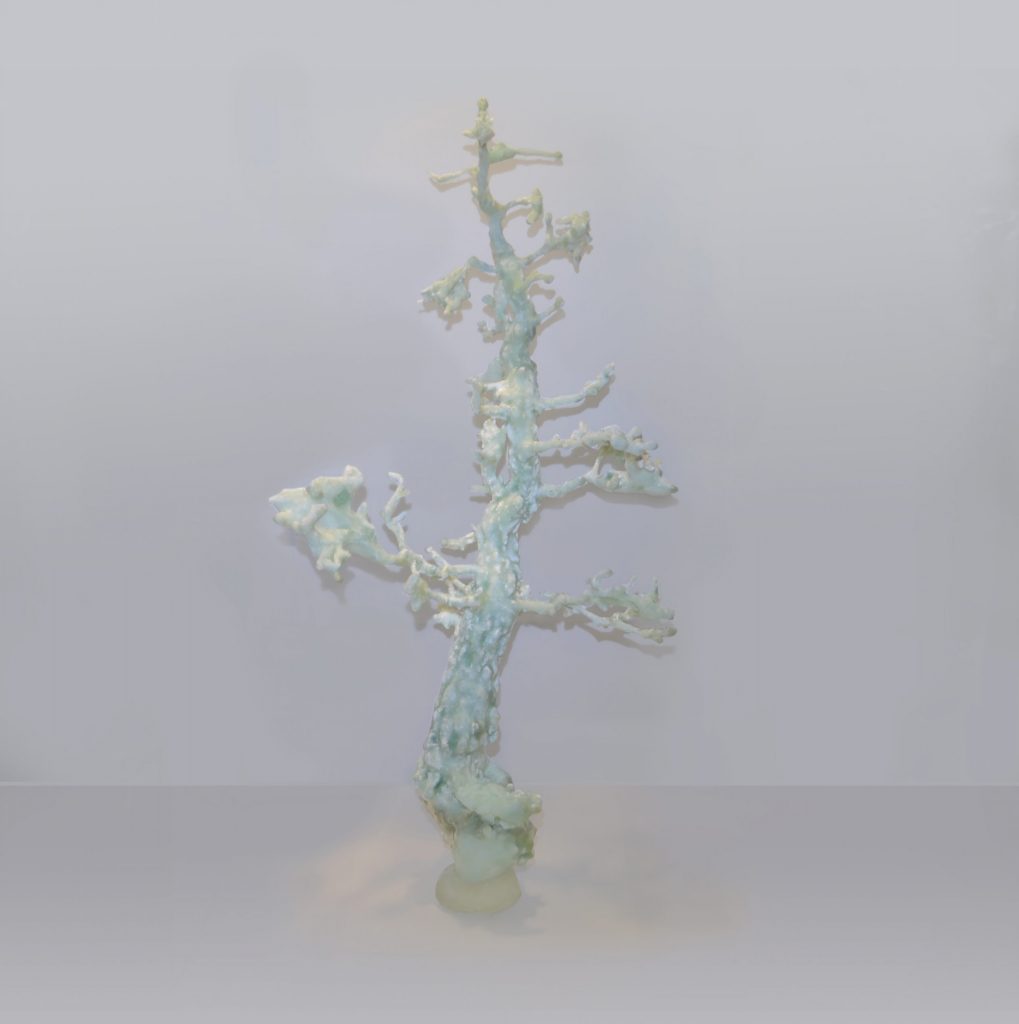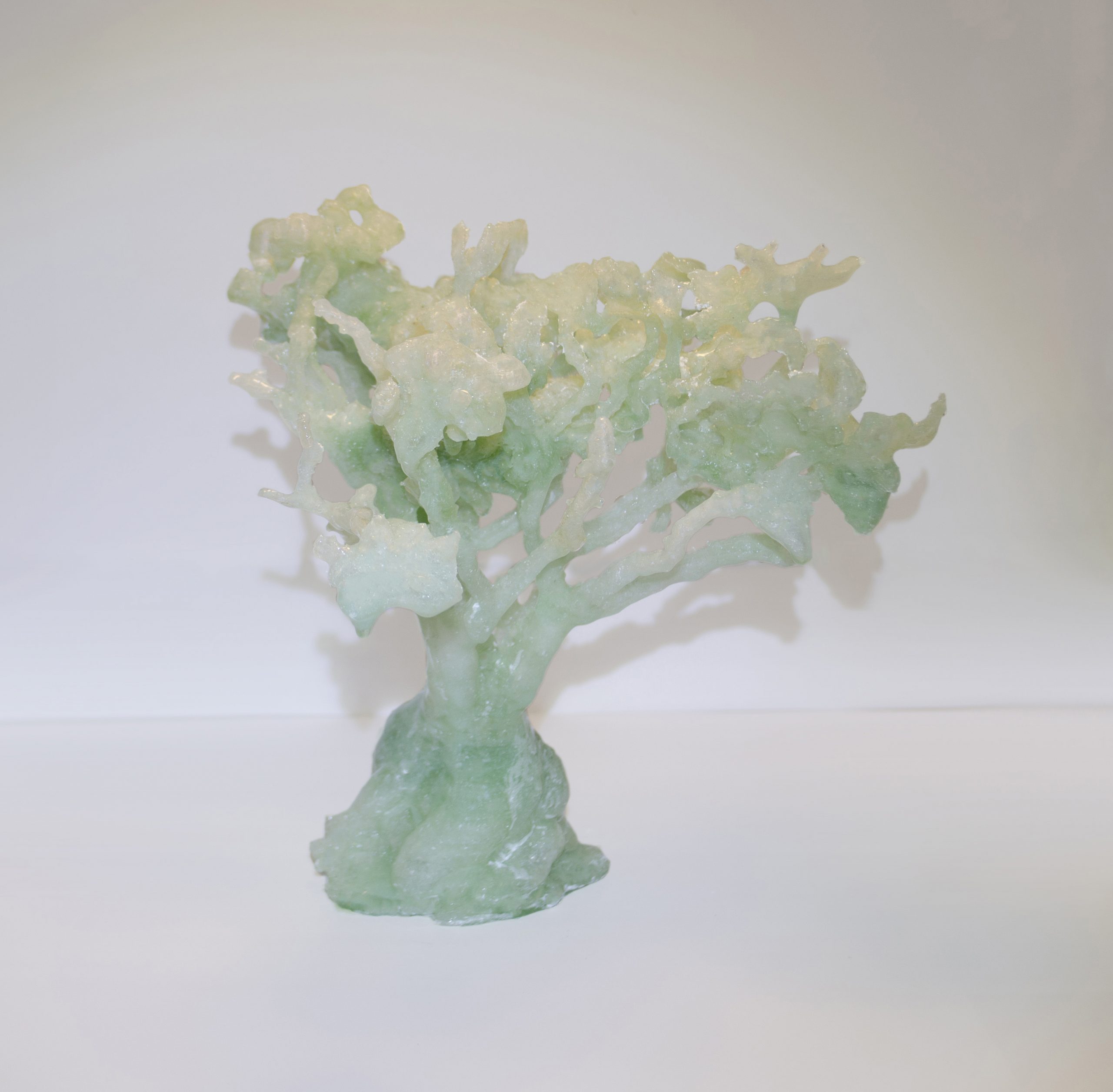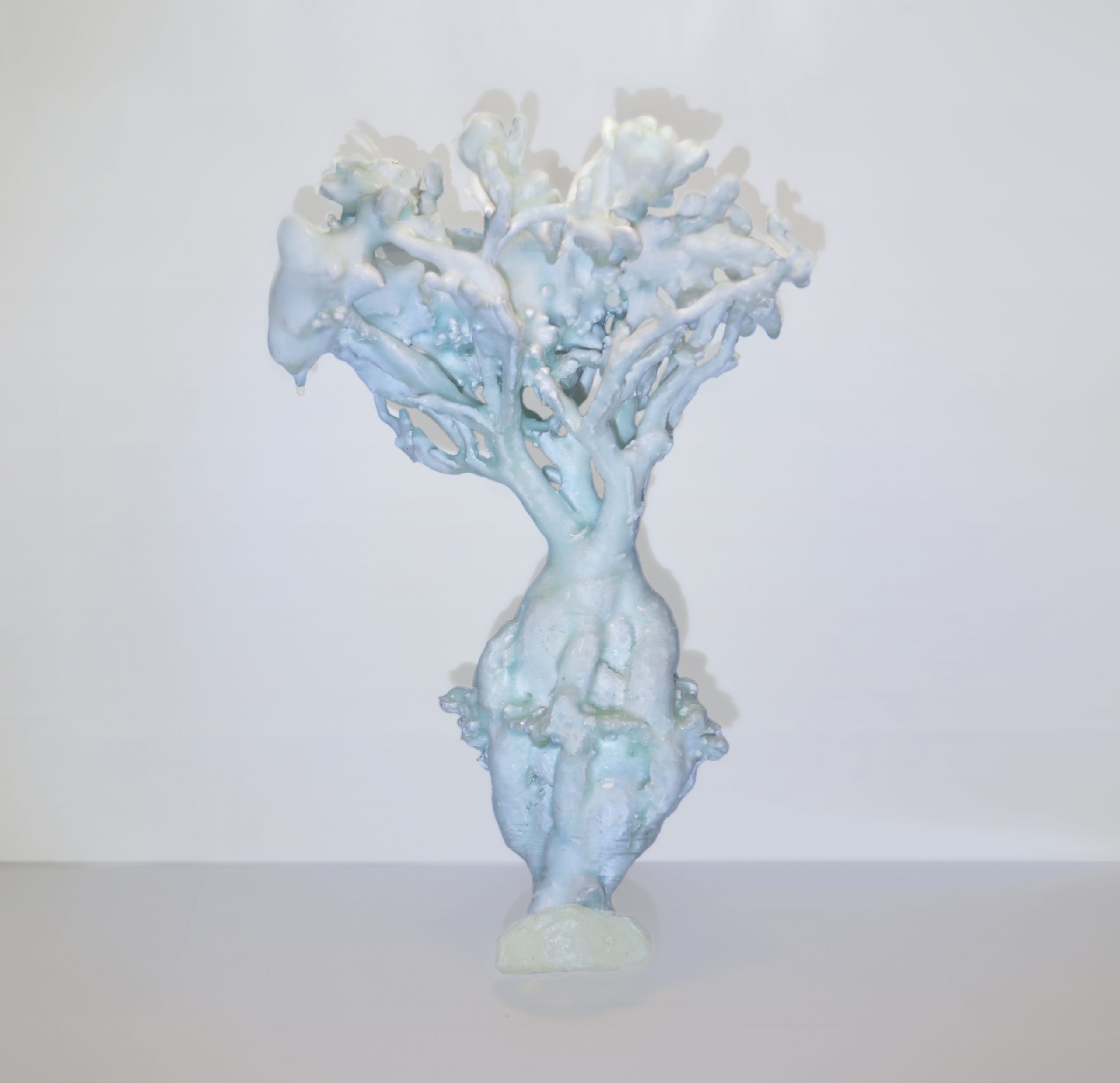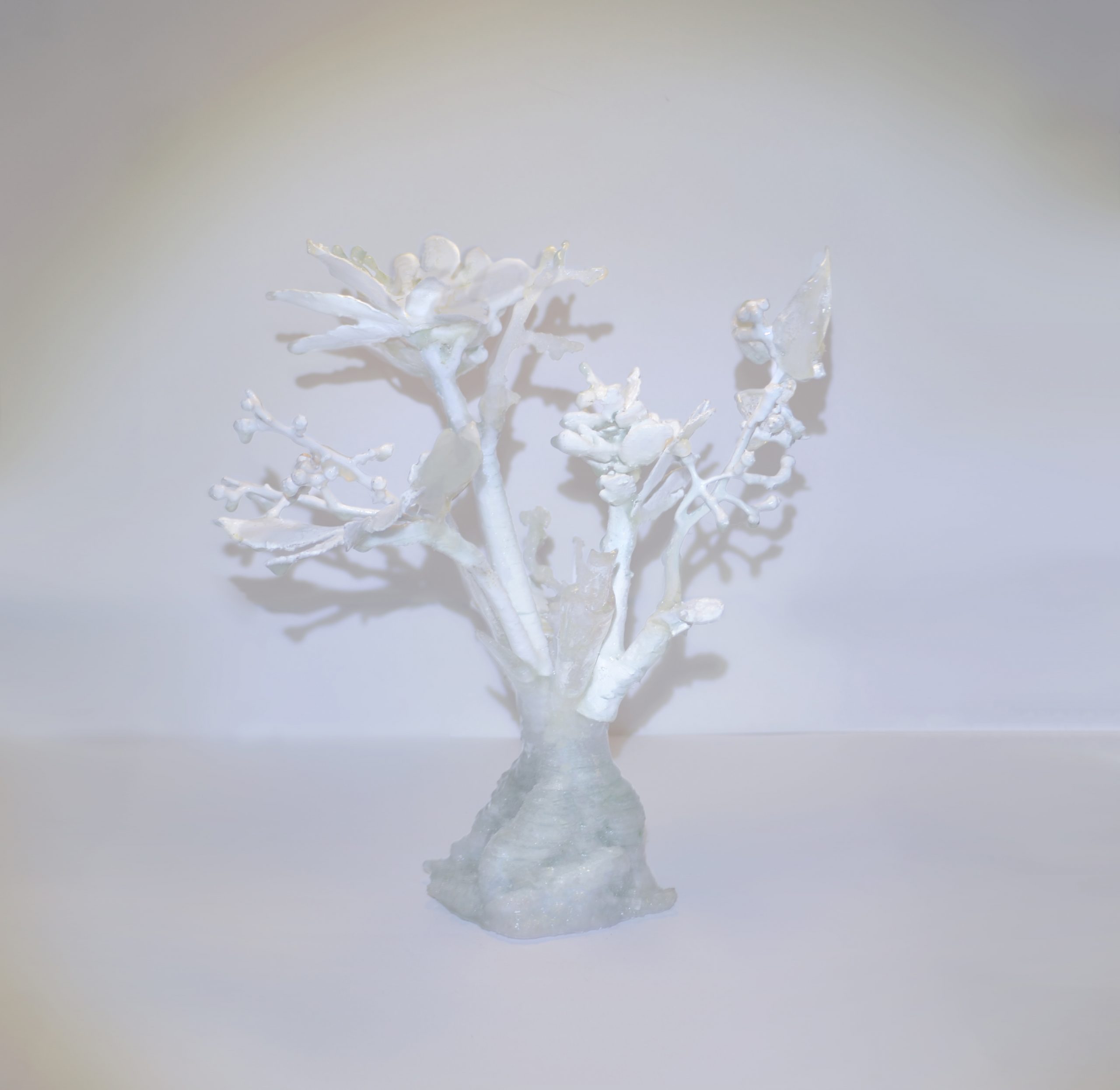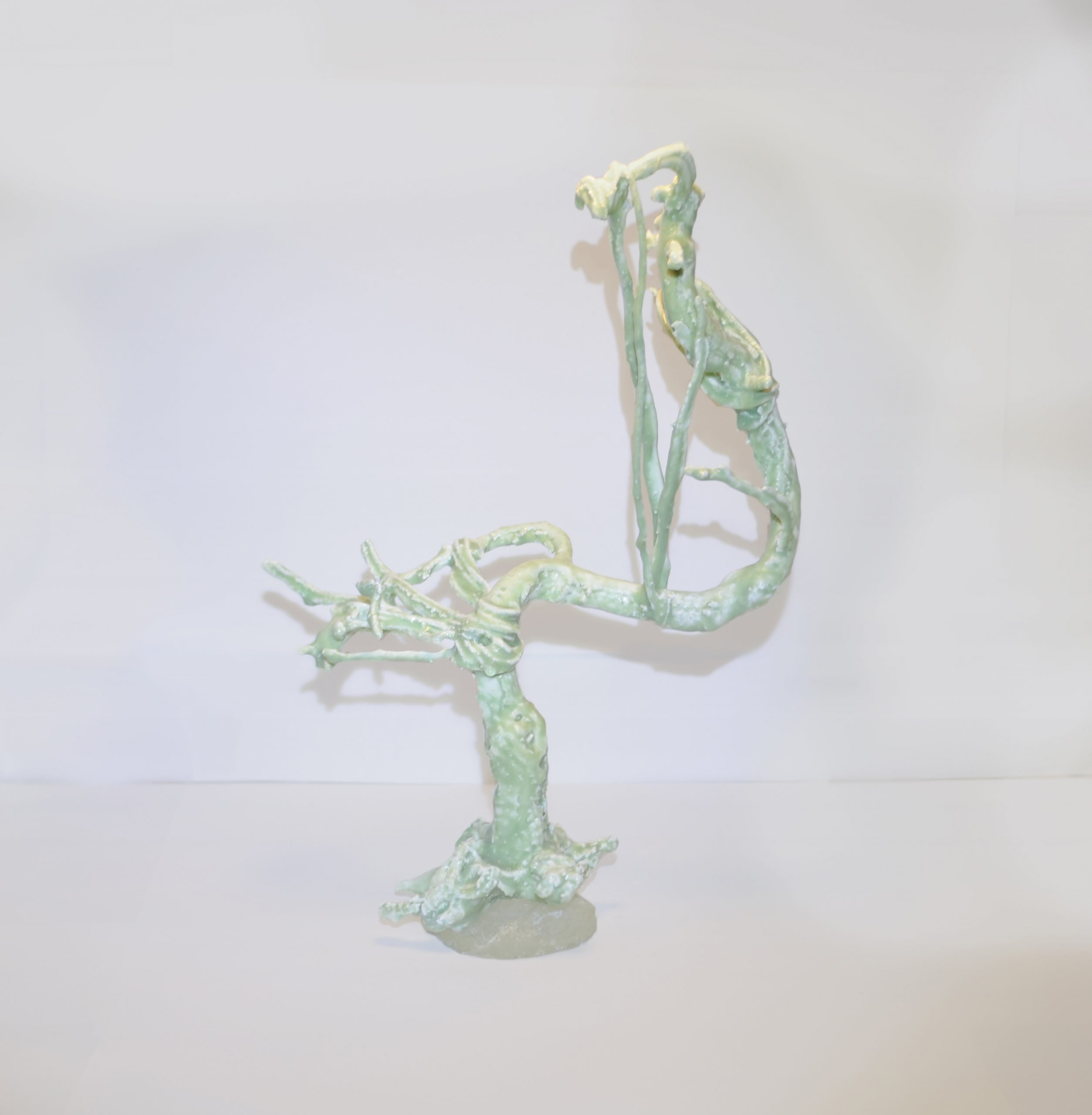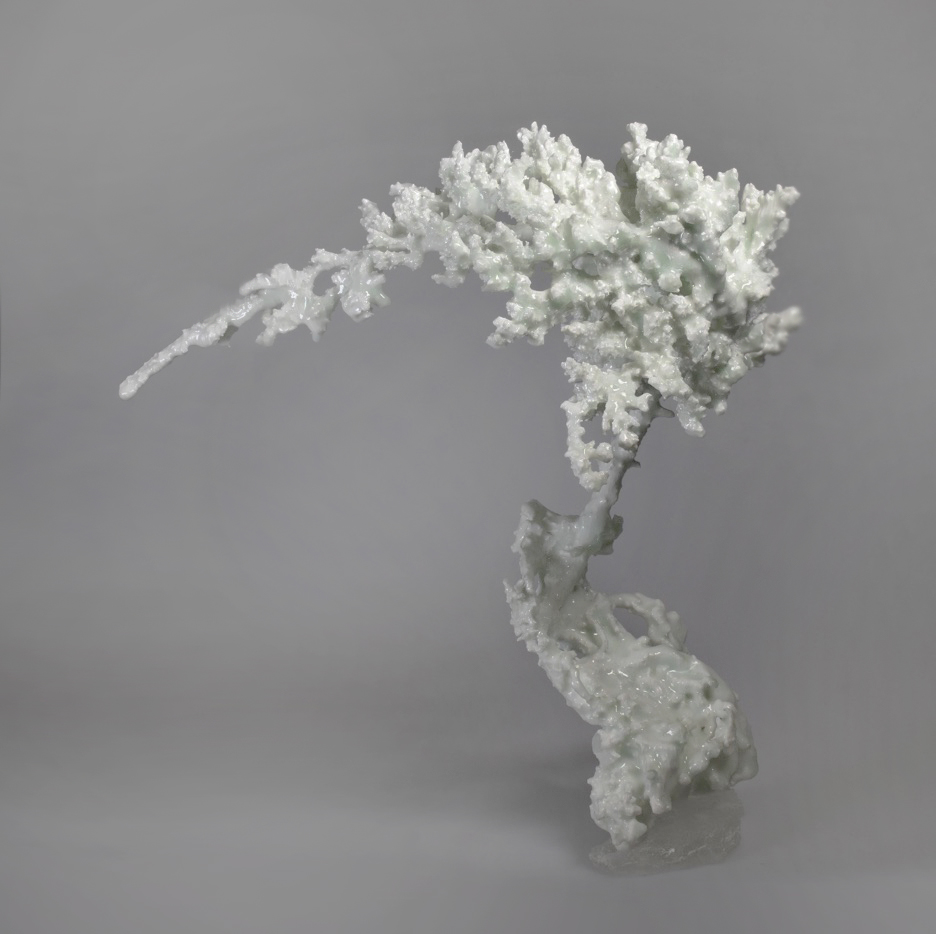The Bonsai Paradox: A Celadon Future presents a series of digitally fabricated and virtual bonsai that engage with and empowers the Asian diaspora. It explores transplantation, simulacra, and what is natural for communities and individuals that contend with cultural sensitivities and traumas from being seen as artificial or other. There are two forms of digitally altered bonsai simulacra, sourced from 3-D scans of the Chicago Botanical Garden’s bonsai collection as well as other private collections. The first forms include digitally fabricated hand finished sculptures, and the second, VR and one-channel 3-D animations.
The project aims to redefine the relationship between the natural and its representations by digitally mediating traditional Asian technologies that have themselves questioned the boundaries of what is natural–namely the art of bonsai and celadon glaze. Bonsai is the English term for the horticultural cultivation and miniaturization of potted plants. Bonsai imitates the scale and shape of plant counterparts found in nature through fashioning them via wiring, pruning, burning, nourishment, etc. Celadon ceramics encompass a variety of semi-translucent pale green to green-blue stonewares that emulate the appearance of jade, one of the most precious materials in Ancient China.
In essence, bonsai and celadon glaze exemplify technologies used to imitate and fashion nature. Bonsai virtualizes the memory of a forest landscape, and celadon ceramics virtualize jade. In turn today, the digital is a liminal space that informs and deforms physical realities. The digital is used to once again virtualize the physical and emulate analog processes.
The spectrum of the natural continues to expand as our conceptions of reality—physical or digital—blur, merge, and grow. Aristotle theorized art and nature as interchangeable– identical concepts that comprise parts for a whole understanding of what is possible. Art is the imitation of nature and uses techne (technology)– the ability to shape reality through creative thinking–to transform reality from a natural to artificial state. Here, nature is the embodiment of all that is possible, and through creativity, art extends what is possible. The connection between nature, technology, and art comprise a system of metaphysical exchanges that work towards closing the gap between the factual and fictional, existing and theoretical, possible and impossible, in order to make the accidental essential.
The act of transplantation figures in plant life as well as human life—whether its plants or people, we are all part of a bonsai paradox. We contend with the natural as artificial, and an origin that is also diasporic. Just as countless individuals have emigrated from Asia, so too has the potted bonsai. Its umwelt is strictly shaped and meticulously grown in service to an ideal form that is simultaneously natural and artificial. Bonsai embodies and fetishizes the hopes of a diaspora uprooted from their natural origins. Similarly, as celadon became of material interest separate from and including its relationship to jade, as bonsai became of spiritual significance separate from and including its relationship to landscape, and as digital space exists uniquely from but also within in the physical– each Asian Diaspora asserts unique cultural modalities separate from and including their Asian and locally engaged cultures.
This project contends with how the banality of imitation leads to innovation, and considers the digital as a diaspora of the natural, reflecting on the balance between what can be learned from cultural tradition to inform modernity.
Click here for a downloadable Booklet containing the Project Description, Exhibited Works, and 4 Exclusive Digital Prints.
